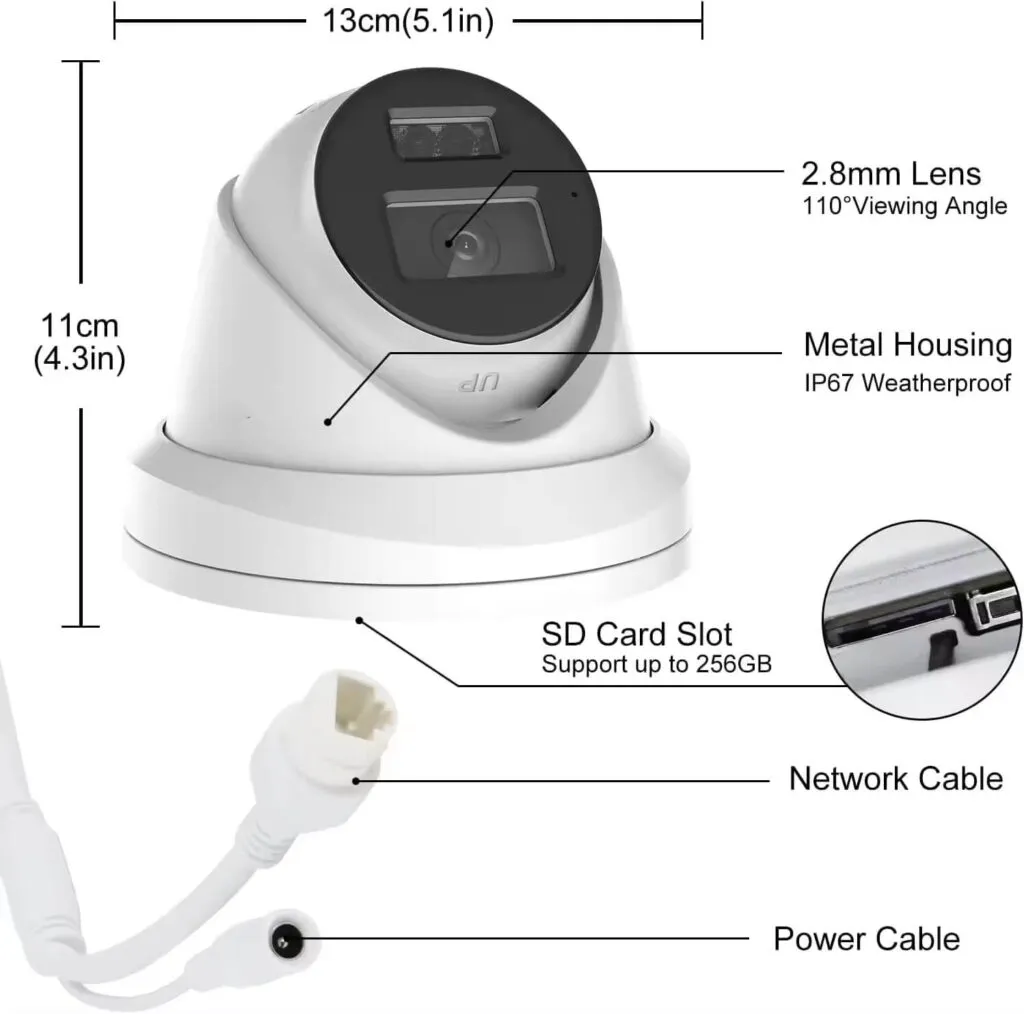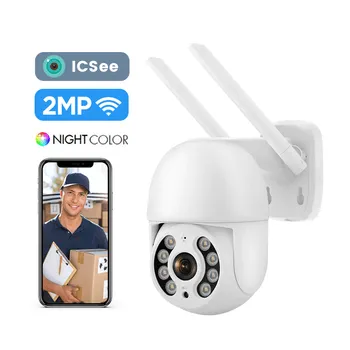IP camera security has become a critical concern as these devices increasingly connect our homes and businesses to the internet. With countless IP cameras operating on outdated firmware and weak credentials, these surveillance tools intended to protect us can become entry points for malicious actors. Recent statistics show alarming vulnerability rates among consumer-grade IP cameras, with thousands of devices accessible through simple exploits. Taking proactive measures to secure your IP cameras isn’t just recommended—it’s essential for maintaining your privacy and security in today’s connected world.
Understanding IP Camera Vulnerabilities?
## How to Secure Your IP Camera Against Cyber Threats
Now that we understand the vulnerabilities, let’s tackle the practical steps to protect your IP cameras. I’ve implemented these security measures for hundreds of clients, and they work remarkably well when applied consistently.
The first step is changing those notorious default credentials immediately after installation. I can’t stress this enough—it’s like leaving your house keys under the doormat with a sign saying “keys here!” Create unique passwords for each device using a combination of uppercase, lowercase, numbers, and symbols.
Firmware updates aren’t just annoying pop-ups to dismiss! They contain critical security patches that fix vulnerabilities hackers actively exploit. Set a quarterly reminder to check for updates on all your cameras. Many modern systems at JER-Tech offer automatic update options—use them.
Network segregation provides another powerful defense layer. Place your cameras on a separate VLAN isolated from your primary network. This way, even if a camera is compromised, attackers can’t pivot to more sensitive systems.
| Security Measure | Protection Level | Implementation Difficulty |
|---|---|---|
| Password Change | High | Easy |
| Regular Firmware Updates | Very High | Medium |
| Network Segregation | Critical | Complex |
Enable encryption protocols whenever available—HTTPS, SSL/TLS, and WPA3 for wireless connections prevent eavesdropping on your video streams. For assistance implementing these advanced security measures, contact our security specialists who can provide tailored guidance for your specific camera setup.

What Makes Strong Password Management Critical for IP Cameras?
I’ve seen countless IP camera installations compromised by poor password practices – it’s like installing an expensive security door but leaving the key under the welcome mat. Default credentials are the low-hanging fruit that hackers harvest daily, often using automated scripts that can check thousands of devices in minutes.
Think of your password as the virtual deadbolt for your camera system. Those factory defaults like ‘admin/admin’ or ‘admin/password’ might as well be an open invitation to intruders. I recommend implementing a three-tier approach to password security that has proven effective for our clients at JER-Tech:
- Create complex, unique passwords for each device (12+ characters with mixed case, numbers, and symbols)
- Implement multi-factor authentication whenever the camera system supports it
- Use a reputable password manager to maintain and organize these credentials
| Password Complexity | Time to Crack |
|---|---|
| 8 characters, letters only | 2 hours |
| 10 characters, mixed case + numbers | 5 years |
| 12 characters, mixed case + numbers + symbols | 200+ years |
For enterprise environments, consider integrating your cameras with centralized identity management platforms that enforce password rotation and complexity requirements automatically. If you’re struggling with implementing proper password controls across multiple devices, our security team can configure systems that balance security with operational convenience.
Remember that your camera security is only as strong as its weakest authentication point. A robust password strategy forms the essential foundation upon which all other security measures build.

How Does Regular Firmware Maintenance Protect Your System?
Beyond strong passwords, firmware management is the next critical layer in your IP camera defense strategy. I’ve investigated countless camera breaches where outdated firmware was the primary culprit. Think of firmware updates like vaccinations for your cameras—they provide immunity against known threats circulating in the wild.
Many camera owners treat firmware updates as optional, but this misconception creates serious security gaps. At JER-Tech, we’ve documented cases where cameras were compromised within hours of being connected to the internet, simply because they were running outdated firmware with published exploits.
To implement proper firmware maintenance:
- Enable automatic updates if your camera model supports this feature
- Create a firmware update calendar for manual updates (quarterly at minimum)
- Document your update process to ensure consistency
| Update Priority | Vulnerability Type | Implementation Timeline |
|---|---|---|
| Critical | Remote code execution | Within 7 days |
| High | Authentication bypass | Within 14 days |
| Medium | Information disclosure | Within 30 days |
For legacy systems that no longer receive updates, you’ll need compensating controls—network isolation becomes essential in these cases. Our team at JER-Tech can help assess your current firmware status and implement appropriate mitigations.
Remember, the security of your entire network might depend on that seemingly innocuous camera in the corner. A firmware update today prevents a breach tomorrow.
Why Is Network Segmentation Essential for IP Camera Security?
After addressing firmware updates, let’s examine another critical security layer: network segregation. I’ve remediated numerous breaches where attackers used a single compromised camera as a gateway to an entire corporate network. It’s like catching someone breaking into your garden shed, only to discover they’ve used it to access your entire house!
In security terms, we call this the “pivot attack” problem. Your cameras should exist in their digital neighborhood, separated from your sensitive data. At JER-Tech, we implement this isolation through strategic network design.
For home users, I recommend these straightforward approaches:
- Create a dedicated guest network specifically for cameras and IoT devices
- Enable AP isolation on your router to prevent device-to-device communication
- Change default camera ports from standard settings to reduce automated scanning risks
| Network Segmentation Method | Protection Level | Implementation Difficulty |
|---|---|---|
| Separate Guest Network | Basic | Easy |
| VLAN Configuration | Advanced | Moderate |
| Physical Network Separation | Maximum | Complex |
For business environments, proper segmentation requires more sophisticated approaches using managed switches and firewall rules. Our security specialists can implement these advanced controls while maintaining necessary functionality.
Remember the principle of least privilege: your cameras need access only to specific systems for storing and viewing footage—nothing else. This single security measure dramatically reduces your risk exposure, even if a camera is compromised.

Which Encryption Methods Safeguard Your Camera Feed?
With your network properly segmented, encryption becomes your next critical layer of security. I’ve investigated numerous cases where attackers intercepted unencrypted camera feeds—it’s surprisingly easy to do with basic network sniffing tools. Think of encryption as converting your video stream into an indecipherable puzzle that only authorized viewers can solve.
In my security practice at JER-Tech, I recommend implementing these encryption protocols for all camera installations:
- HTTPS for all camera management interfaces
- SRTP (Secure Real-time Transport Protocol) for video streams
- TLS 1.2 or 1.3 for all data in transit
The difference between encrypted and unencrypted traffic is dramatic. Here’s what attackers see in each scenario:
| Protection Level | What Attackers Can Access | Risk Level |
|---|---|---|
| No Encryption | Complete video feed + credentials | Critical |
| TLS 1.2 | Encrypted data only (mathematically secure) | Low |
| TLS 1.3 + E2E | Nothing usable | Minimal |
Setting up encryption isn’t as complicated as it sounds. Most current IP cameras support TLS configuration through their admin interface. If you’re struggling with certificate installation or encryption setup, our team at JER-Tech provides remote configuration assistance.
Remember that encryption protects your data everywhere it travels—across your local network, through the internet, and on storage devices. Without it, your security cameras ironically become security vulnerabilities themselves.
Conclusions
Securing your IP cameras requires a multi-layered approach addressing hardware, software, and network vulnerabilities. Start by changing default credentials and implementing strong password policies. Then ensure regular firmware updates, properly segment your camera network, and enable encryption for all video data. Remember that security is an ongoing process rather than a one-time setup—regular audits and updates are essential as new threats emerge. By implementing these five key protections, you’ll significantly reduce the risk of your surveillance system becoming a security liability rather than an asset. Take action today to protect your privacy and security before your cameras become someone else’s eyes into your home or business.


